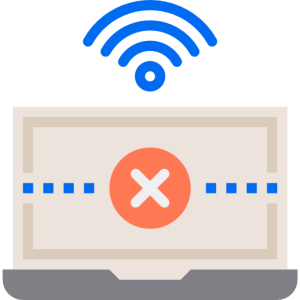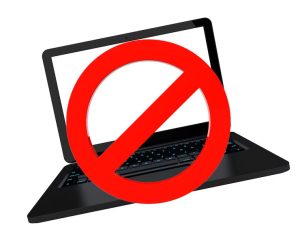Laptop Not Connecting To Internet
In our digitally-driven era, consistent and reliable internet access has evolved from a luxury to an essential tool for everyday life. Whether for work, education, or leisure, the world operates online. Yet, the commonplace scenario where a laptop won’t connect to WIFI can be a significant hindrance, bringing tasks to a halt and inducing undue stress. The frustration is only magnified when we encounter messages such as no internet connection on laptop or when our laptop says no internet, even as other devices connect seamlessly. This article delves into the causes behind such issues and provides systematic solutions to ensure that the next time your laptop refuses to link up to the internet, you’re well-equipped to troubleshoot and resolve the problem.
Laptop not connecting to Internet – Reasons:
Before diving into solutions, it’s pivotal to understand the root causes of such connectivity issues. By grasping the ‘why’, we’re better equipped to tackle the ‘how’ of fixing it. In this section, we’ll unravel the common culprits behind the laptop not showing available networks or Laptop won’t connect to WIFI, offering clarity on what might be disrupting your laptop’s virtual lifeline.
-
Laptop Software/Driver issues:
Sometimes, the issue isn’t with the physical components but with the software that controls them. If your laptop drivers are outdated or incompatible, it can result in the laptop not connecting to WIFI. It’s essential to ensure drivers are updated and compatible with your operating system. Software glitches in the operating system can also cause anomalies. You might find that your laptop won’t connect to internet because of an operating system bug that affects the network connectivity features.
-
Laptop Network issues:
It’s not always the laptop’s fault. Sometimes, external network devices such as routers or modems might have problems, leading your laptop won’t connect to internet. This can be due to firmware issues, temporary glitches, or even physical damage. If other devices at home can connect but your laptop says no internet, it’s possible there’s a specific restriction or setting applied on your network that’s blocking the laptop’s access.
-
Incorrect Laptop Settings:
Sometimes, the devil is in the details. An incorrect network setting, such as a wrongly input password or misconfigured IP settings, can be why your laptop not connecting to internet. If your laptop won’t connect to hotspot, it might be due to mismatched security configurations or other related settings that need to be aligned with the hotspot’s parameters.

-
Laptop Hardware issues:
One of the primary reasons your laptop won’t connect to WIFI might be hardware-related. The laptop’s WIFI card, which enables wireless connectivity, or the antenna, which helps in catching the signals, might be malfunctioning or damaged. There are also instances where users find their laptop not showing available networks. This could be due to the failure of internal components responsible for detecting and connecting to networks.
-
External Interferences in Laptop:
External factors can sometimes interfere with your laptop’s ability to connect. If your laptop not connecting to WIFI, it might be due to interference from other electronic devices, walls, or even household appliances. Signal congestion, especially in densely populated areas with multiple overlapping WIFI signals, can also be a reason why a laptop struggles to establish a stable connection.
Understanding these causes is the first step to finding a solution. In the subsequent section, we will dive deep into practical steps you can take to address each of these concerns and restore your laptop’s internet connectivity.
Fix Laptop not connecting to Internet:
Navigating a day without the internet can feel like steering a ship without a compass, especially when our routines are so intertwined with online activities. Whether you’re a seasoned tech enthusiast or someone who just wants to quickly get back online, this section provides a comprehensive approach to diagnosing and resolving the most common connectivity issues. Let’s delve into the ways you can reignite that internet connection and ensure your laptop is back in the digital world.
-
Inspect the laptop’s WIFI card and antenna:
Start by ensuring that the WIFI card is properly seated and functional. For many laptops, especially older ones, the WIFI card is accessible via a removable panel at the bottom. If you suspect the internal WIFI card is the issue and your laptop not connecting to WIFI, consider trying an external USB WIFI adapter as a temporary solution.
-
Finding and installing latest Laptop drivers:
Access the device manager on your laptop (commonly found in control panel or system settings). Look for ‘network adapters’ and update the relevant drivers. This step might help if your laptop won’t connect to WIFI. Sometimes, the latest isn’t always the greatest. If you recently updated a driver and then noticed that your laptop not connecting to internet, consider rolling back to the previous version.

-
Reset and configure routers or modems:
Unplug the power from your router or modem for about 30 seconds, then plug it back in. Wait for all lights to stabilize. This often resolves many connectivity issues, especially if there’s no internet connection on laptop.
-
ISP and broader network checks:
If the laptop says no internet, it’s worthwhile to check if the issue isn’t broader than just your device. You can do this by trying to join other devices or checking your ISP’s service status.
-
Laptop Network settings configuration:
Go to your laptop’s network and sharing center or equivalent. Ensure that it’s set to automatically obtain an IP address and DNS server. Misconfigurations here can lead to laptop not connecting to internet.
-
Reconnect Laptop and re-enter password:
If your laptop won’t connect to hotspot, try forgetting the network from your list of saved networks and reconnecting by entering the password again.
-
Laptop Positioning matters:
Ensure that your laptop and router are positioned in such a way that there are minimal obstructions. Walls, especially concrete ones, can greatly weaken WIFI signals, leading to scenarios where the laptop not connecting to WIFI.
-
Reduce electronic interference:
Devices like microwaves, cordless phones, and even other WIFI networks can interfere with your connection. If you’re experiencing unstable connectivity, consider changing the channel on your WIFI router or moving interfering devices.
Remember, while these solutions cater to a broad range of issues, every situation is unique. It may take a combination of the aforementioned fixes, or even professional assistance, to get your laptop back online. To know more about our support services, you can navigate to the website’s Homepage.
